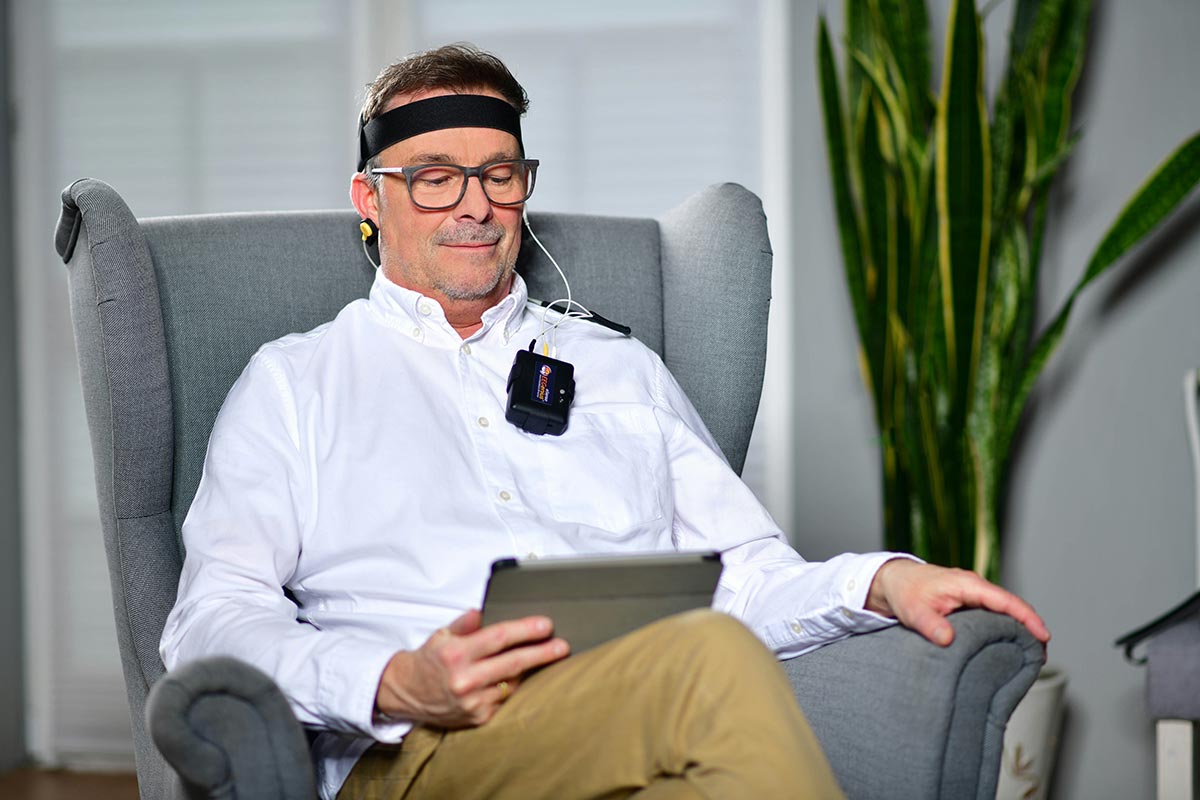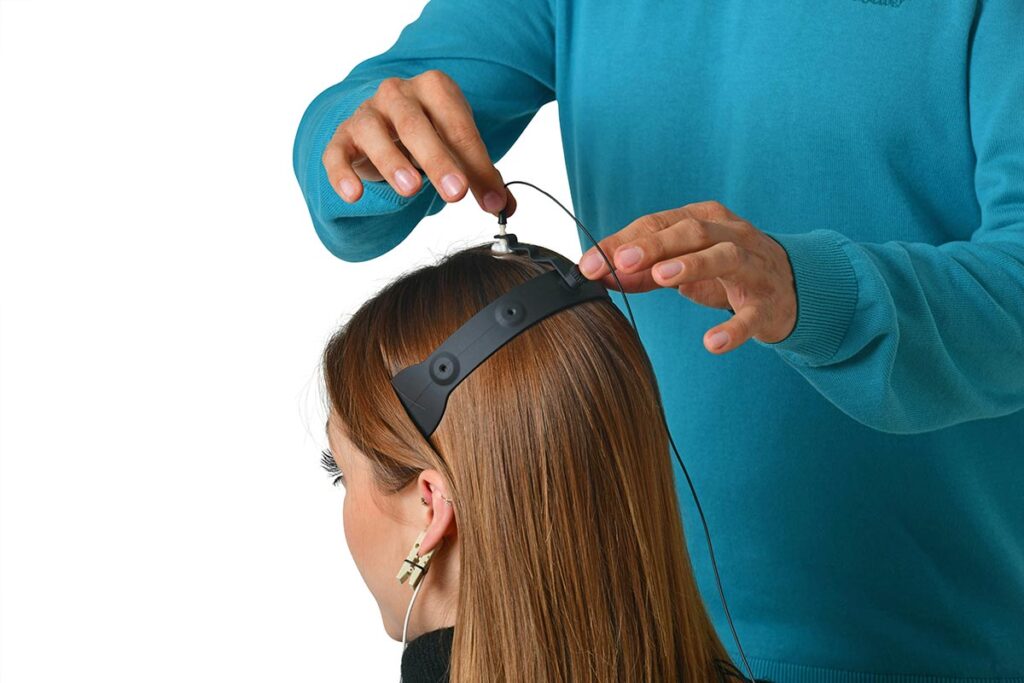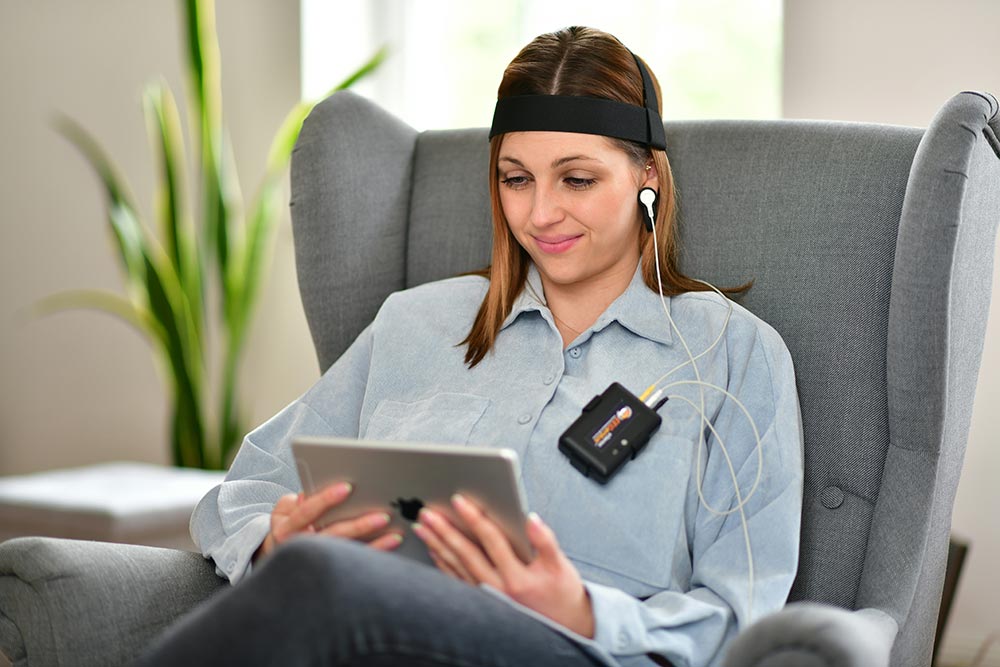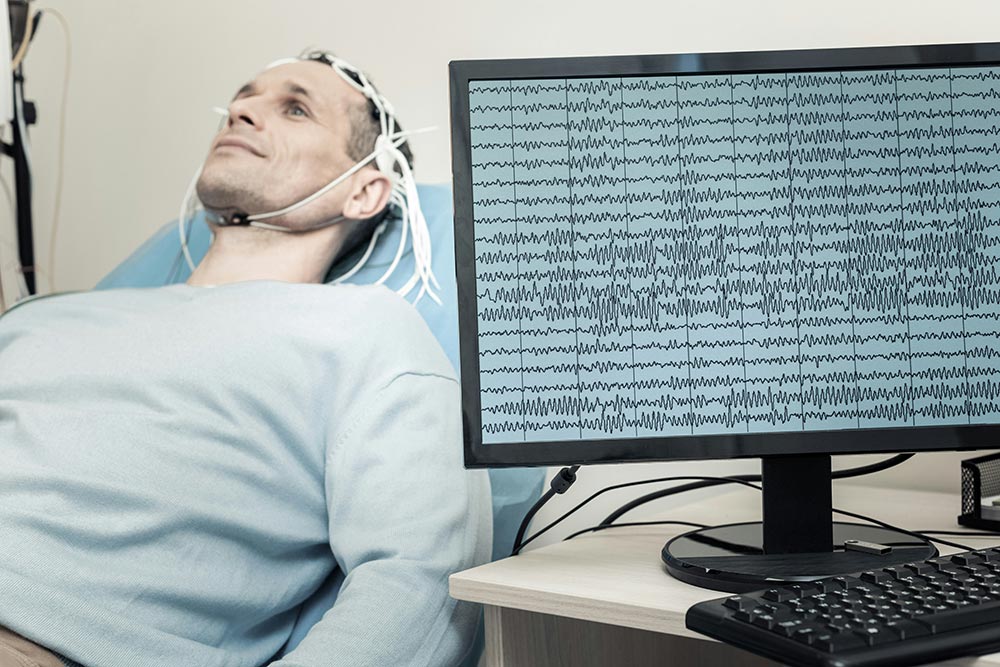We Accept Most Insurance. Please Call to Verify Yours.






![]()







Neurofeedback is a type of biofeedback, which is gaining popularity in the medical world, as a means of offering real-time feedback on response and reaction of the brain. In most cases, that means using sensors to track electrical signals from the brain and then using sound, visual, or electrical feedback to positively or negatively reward that response. Neurofeedback can be used to get insight into the real-time responses of the brain or to provide real-time positive or negative feedback based on reaction – both of which can be extremely helpful in learning new behavior.
Neurofeedback is currently used as a complementary or secondary therapy to support behavioral therapy, medication, and counseling for ADHD, seizures, brain injury recovery, insomnia, anxiety, depression, PTSD, trauma or age-related cognitive problems, behavioral disorders, and even in developmental delays.
More and more often, it’s also used in helping individuals in addiction treatment to visualize how they are responding and to provide real-time feedback to that – meaning it’s more and more often finding a place in addiction treatment.
Neurofeedback therapy typically consists of weekly or daily sessions of 30-60 minutes. When you arrive to your session, you’re seated in a chair and then fitted with electrodes that attach the scalp. Most neurofeedback technicians will use a cap or band to speed this up, so getting started should take a few minutes. From there, they’ll turn everything on, calibrate software, and you’ll begin to see your “brainwaves” or the electrical impulses put off by the brain. This is similar to but less intensive than an EEG (Electroencephalogram).
You’ll also see a visualization of your brainwaves on a screen. In some cases, you’ll be asked to think about specific things, like cravings, behavior, etc. Your therapist may also talk you through behavior or experiences. And, you’ll get direct positive or negative stimulus based on the responses of your brain, in real time.

Neurofeedback therapy for addiction treatment typically involves about 30 minute daily sessions. Here, treatment itself is usually split into sensory motor rhythm training – where you’re trained to focus attention and mood on a task as well as electromagnetic stimulation. However, the actual course of treatment depends on where you’re going and what kind of equipment and training they have. However, in every case, neurofeedback is about conditioning, used to reinforce desired behavior and disincentivize undesirable behavior.


Neurofeedback is a form of therapy that gives you the tools to manage or regulate your responses with direct feedback based on physical response. It’s not unlike other therapies that use behavioral training to offer immediate feedback on behavior. However, it’s more specialized in that it specifically helps you to visualize what your brain is doing and to respond to that – rather than to specific actions. This means you can use it to train focus and attention span without having to actively go through a talking therapy session. The idea is that if you can see what’s going on, you’ll have more ability to change what’s going on. Real-time feedback also means you’ll notice what’s going on more quickly, so you can respond more quickly and improve at that skill.
Neurotherapy also often uses either surface electrical stimulation or electromagnetic pulses to affect brain waves directly. This means that instead of providing simple visual or auditory feedback, you directly change brainwaves when they are behaving in ways you don’t want them to.
Here, stimulation is provided to the point of the brain expected to most directly impact the desired result, so your actual course of treatment will change depending on what you’re trying to do in treatment.
Neurofeedback is not a cure for anything. Nor is it a standalone therapy for anything but attention management. However, it’s often recommended as a complementary therapy to other forms of treatment. For example, you can add neurofeedback to addiction treatment to help train focus, to help you manage coping skills, to help you train perspective, and to give you insight on what is actually happening when you start thinking negatively or start experiencing cravings.
Often, that means neurofeedback is used to back up or reinforce treatment from your primary therapy. For example, you can use it to push towards improving your focus or mood or how you manage mood, stress, or anger while in the middle of a primary treatment plan. Here, visualizing what’s happening and getting real-time feedback will allow you to better understand what you’re doing and when you start doing it.
That’s especially important for individuals with a long history of substance use disorder, who may have disconnected from emotions quite a bit. Getting real-time feedback means you can more easily see when things start to happen, which means you can start to recognize what that even feels like. In turn, you can use that skill to recognize when things start to go wrong in normal life outside of sessions, and then respond to that more quickly.
Electromagnetic stimulation is also used to directly change brain waves or reactions. That can be helpful for many, although changes are not permanent and instead rely on positive reinforcement and a better understanding of what each option feels like. In some cases, studies have also shown that electromagnetics can temporarily reduce cravings and the need for substances, which means you get extra space to focus on treatment and building skills to cope with cravings on your own.
It’s important to keep in mind that neurofeedback can vary quite a bit. For example, the most common form of neural feedback uses simple auditory or visual stimulus as a real-time reward. Other forms of neural feedback use electromagnetic waves to actually attempt to change your brain activity rather than asking you to do it yourself, making the whole experience much more passive. For example:

Essentially, even in this relatively new form of therapy, there are already multiple variations, and you’ll have to ask what you’re getting before you know. Your session could involve sitting with your eyes closed, talking through a specific behavior, dealing with cravings, watching a screen, or even creating and responding to anger or stress.
If you or a loved one is struggling with substance abuse, getting rehab or treatment is important. Neurofeedback is not a primary treatment and never will be. However, it can be a great tool to add to your treatment plan for helping you overcome cravings, to train attention, to train mood regulation, or to achieve many other similar goals. While neurofeedback won’t cure you of addiction, it can give you the tools to improve your quality of life, to reinforce your primary treatment and counseling, and to achieve goals like managing cravings.
If you’re interested in starting neurotherapy, it’s a good idea to start by talking to your doctor or a clinician at a rehab center that offers it. In each case, you’ll get advice, information on how it works at the specific clinic you’re going to, and an idea of what treatment will look like for you in addition to neurotherapy. Good luck getting help.

SEO and Digital Marketing Expert
Jim Sugel is an SEO and Digital Marketing Expert in addition to having achieved the coveted Google Partner status for PPC expertise. Prior to focusing on Digital Marketing, Jim worked in Information Technology roles at a variety of national firms as a software engineer and consultant, resulting in many years of professional coding and consulting experience.
Jim holds a Bachelor of Science, cum laude in Computer Science and Psychology from Loyola University Chicago. After relocating to Southern California from his native Chicago, he became involved in the recovery industry here, discovering a natural niche in helping treatment centers with Digital Marketing and other technology projects. Jim is the Founder and CEO of Airtight Digital, a firm that specializes in digital marketing for the behavioral health industry.
His other interests include hiking, canyoneering, urban exploration, and screenwriting. Jim now lives in beautiful and sunny Orange County, California.